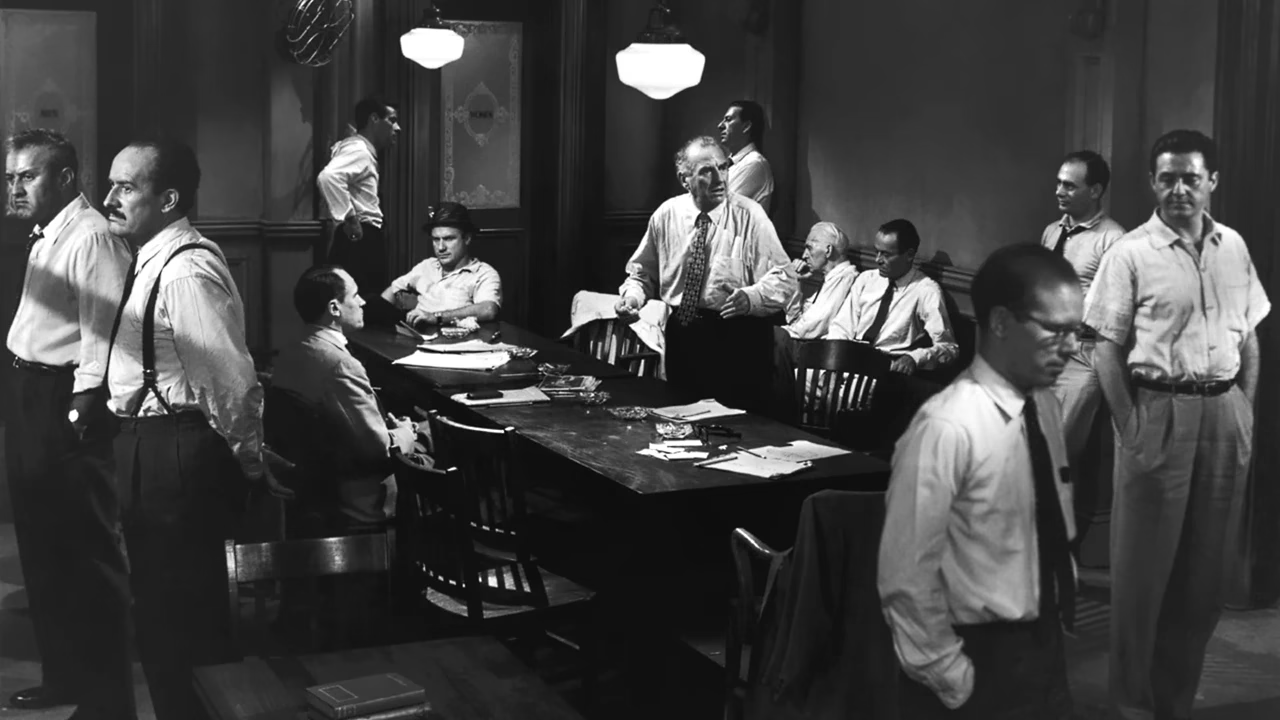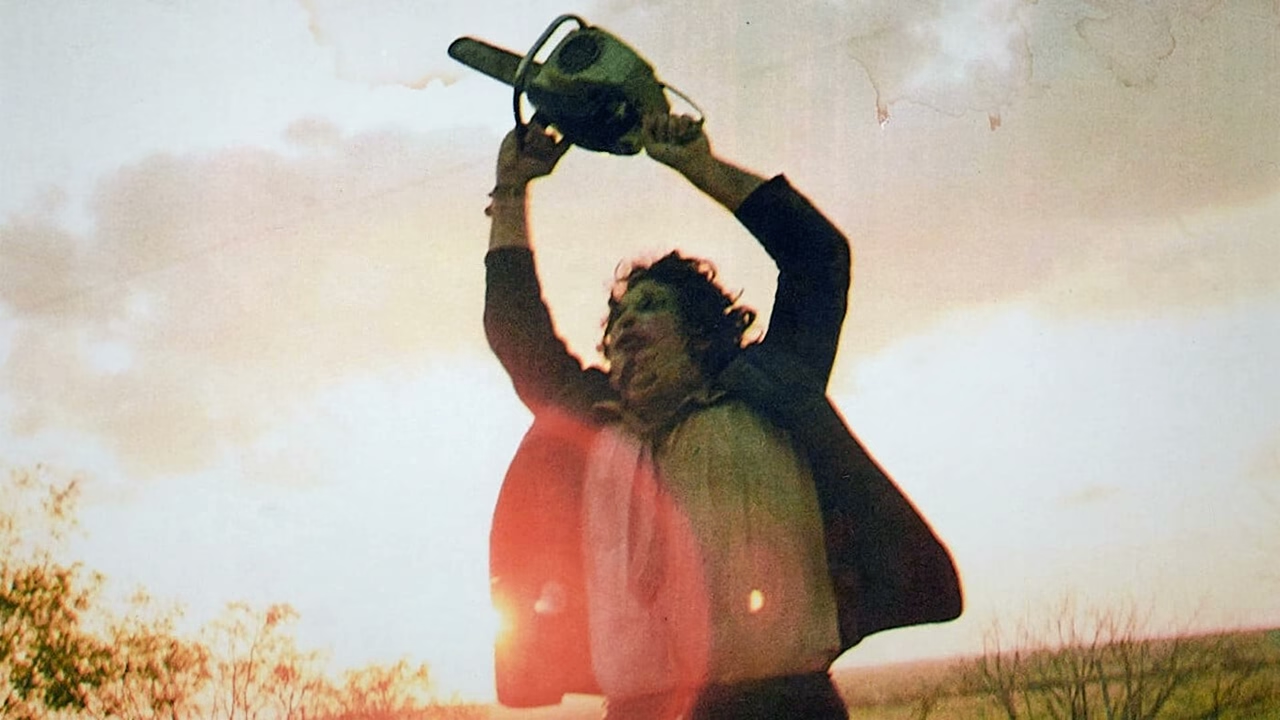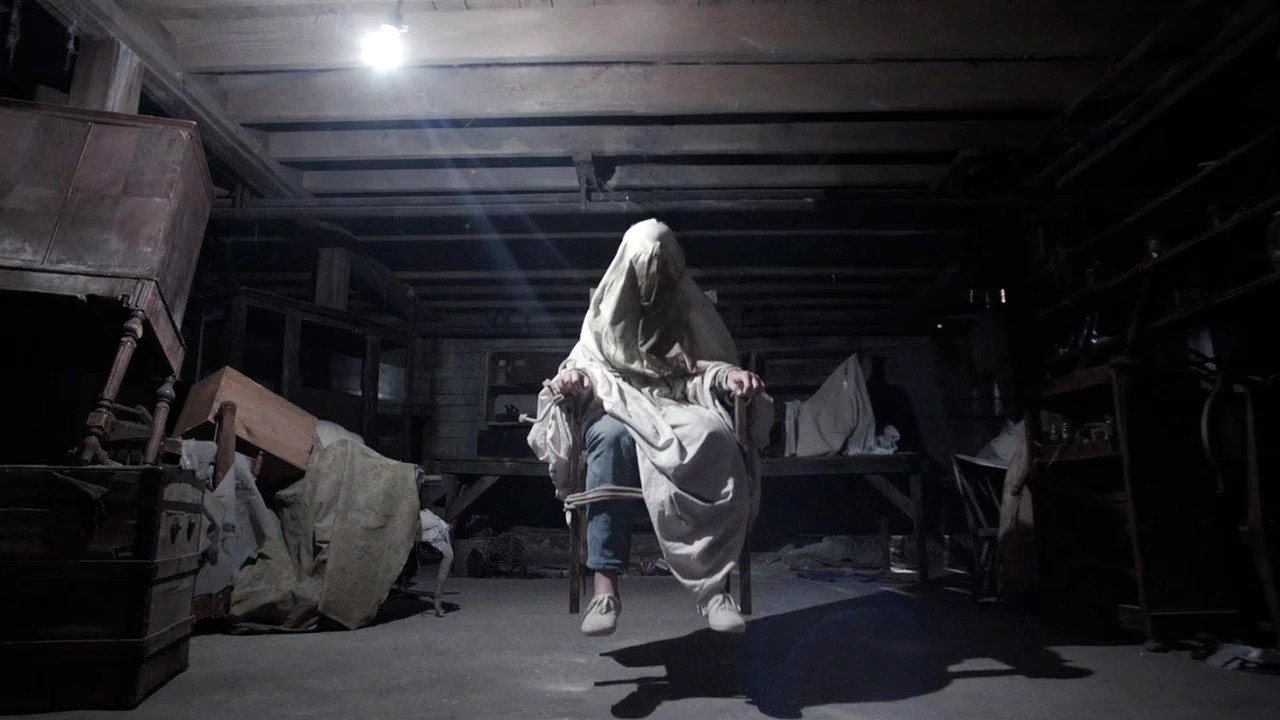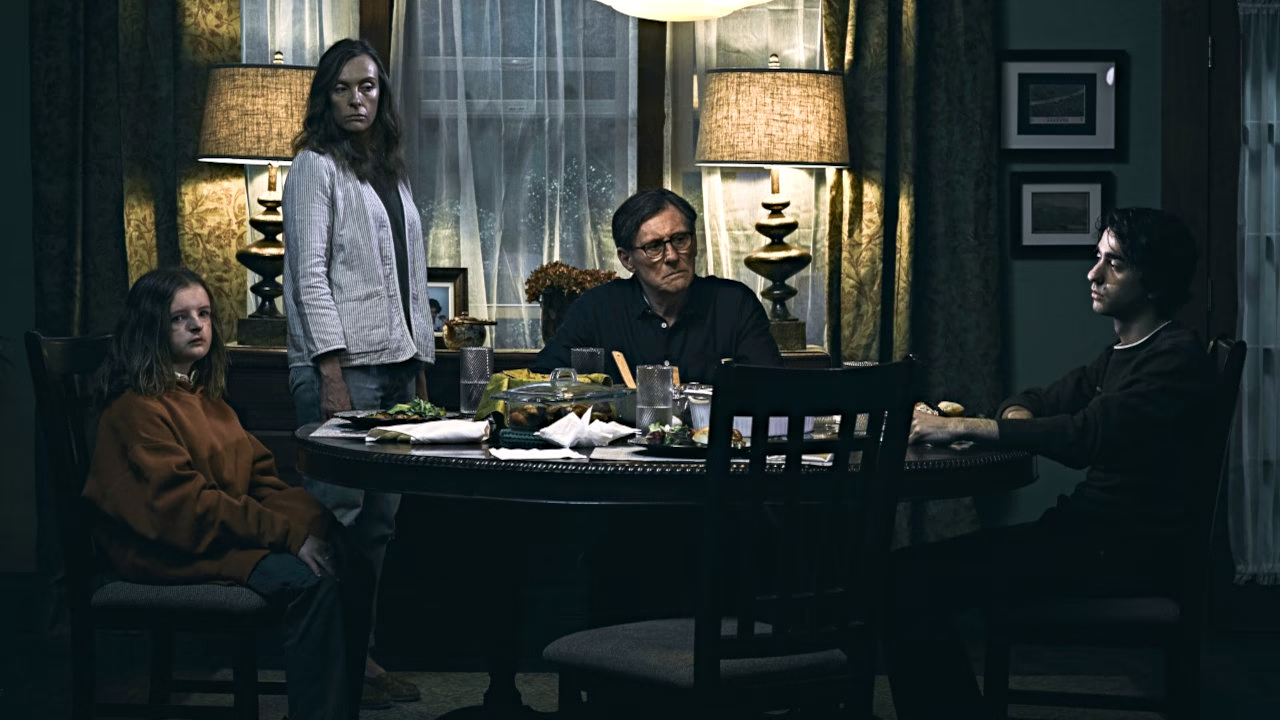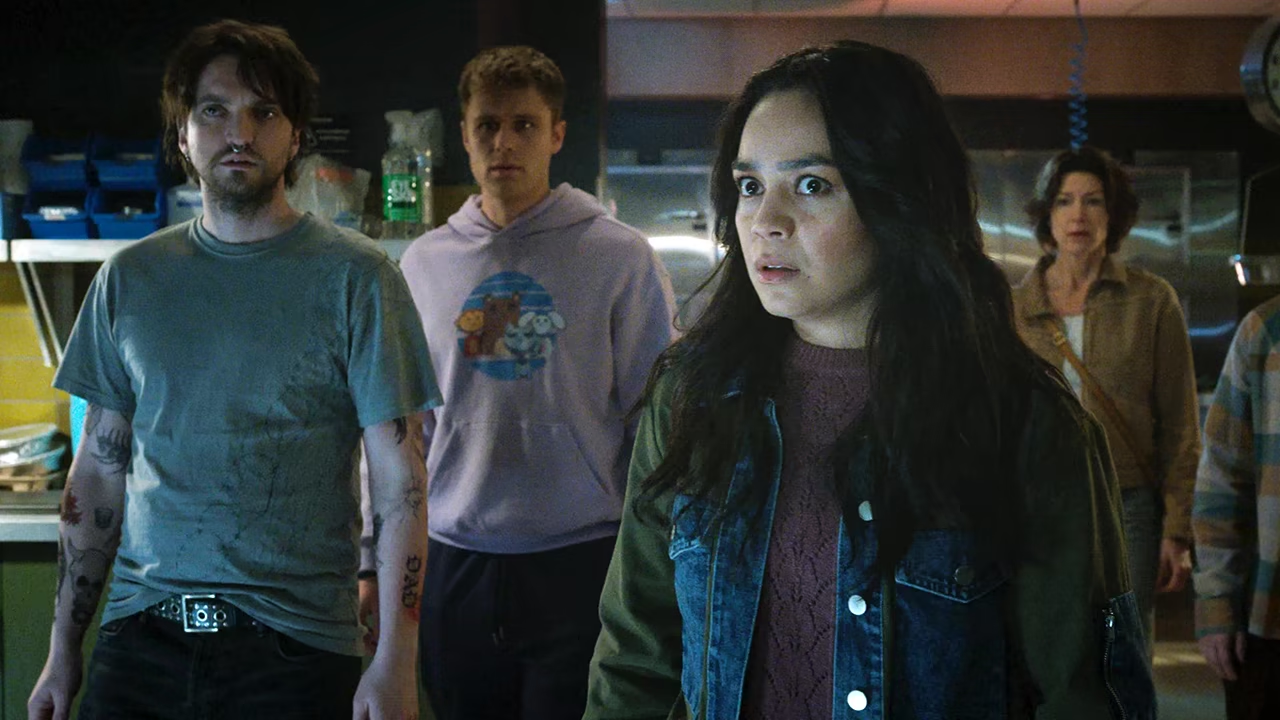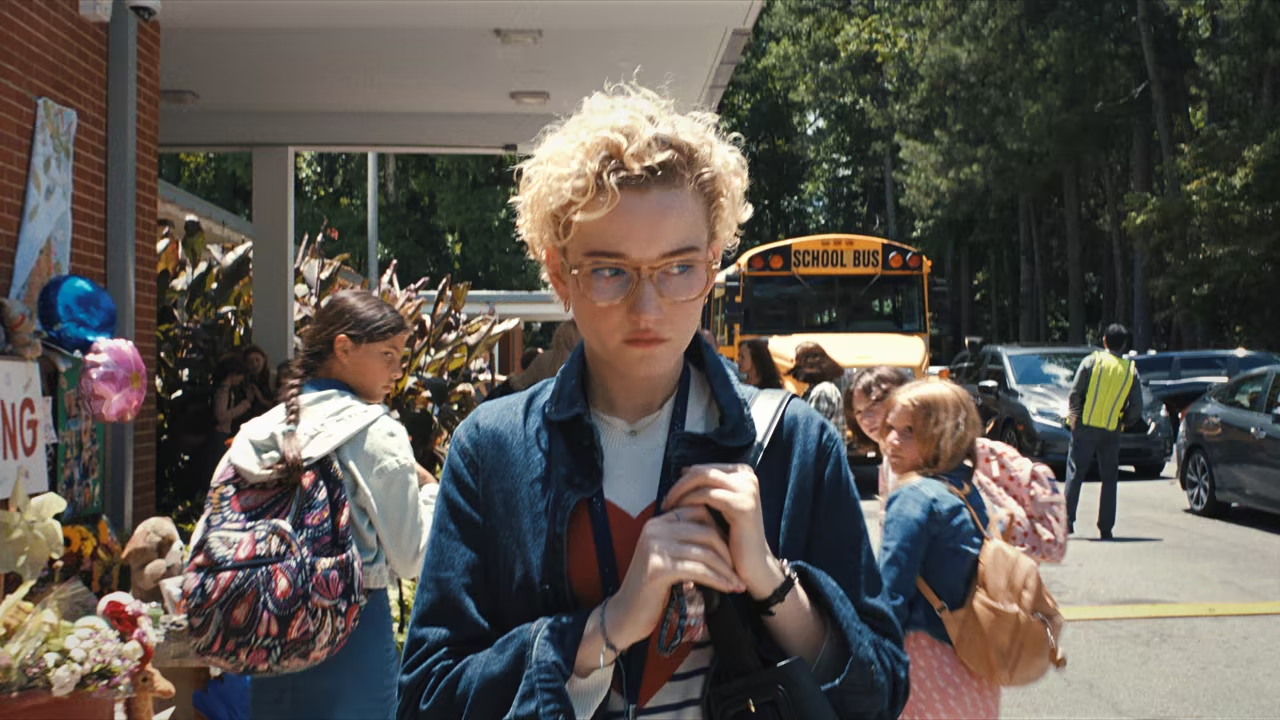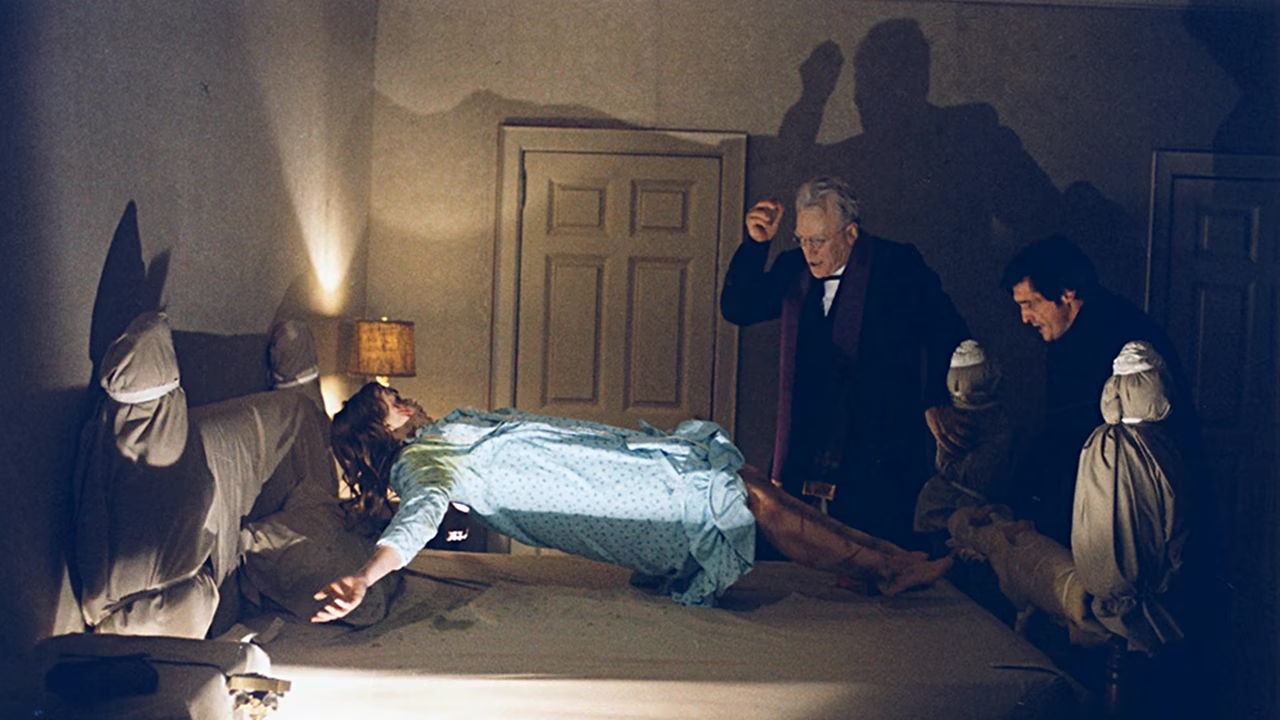
William Friedkin’s 1973 masterpiece The Exorcist transcends conventional horror by confronting the eternal battle between faith and evil through the harrowing possession of a young girl. Based on William Peter Blatty’s 1971 novel and adapted for the screen by Blatty himself, the film explores humanity’s deepest fears about spiritual corruption and vulnerability through its unflinching portrayal of demonic possession. At its core, The Exorcist presents a profound spiritual crisis where modern medicine and psychiatry prove inadequate against supernatural forces, ultimately suggesting that ancient religious rituals may offer the only salvation against primordial evil. This tension between scientific rationalism and religious faith reflects the broader cultural anxieties of post-Vietnam America, where traditional institutions were being questioned and spiritual uncertainty had become widespread.
The film’s narrative power stems from its methodical buildup of dread and grounding in archaeological, medical, and theological authenticity. Beginning with Father Lankester Merrin’s (Max von Sydow) ominous discovery of a Pazuzu amulet in Iraq, The Exorcist establishes a connection between ancient evil and contemporary America. When single mother Chris MacNeil (Ellen Burstyn) witnesses her daughter Regan’s (Linda Blair) transformation from innocent child to vessel for demonic possession, Georgetown’s idyllic setting shifts to a nightmarish confrontation with the inexplicable. The production became legendary, with reports of on-set accidents and injuries fueling public fascination. Upon release, the film sparked unprecedented reactions such as fainting, vomiting, and walkouts, while also igniting fierce religious debates about spiritual warfare. This cultural impact cemented The Exorcist not merely as a horror landmark but as a profound meditation on faith’s enduring relevance in confronting darkness.
Evil Makes First Contact
The Exorcist opens with an archaeological dig in northern Iraq led by Father Lankester Merrin, a seasoned Catholic priest and archaeologist. The excavation at the ancient site of Hatra uncovers artifacts linked to Pazuzu, a malevolent demon in ancient Mesopotamian mythology associated with the southwest wind, locusts, and disease. A small amulet depicting Pazuzu’s grotesque form, unearthed during the dig, foreshadows the demon’s influence. The film subtly hints at Father Merrin’s prior encounter with Pazuzu through a traumatic exorcism years earlier in Africa, though the details remain deliberately vague, creating an air of mystery around his past.
The narrative then shifts to Washington, D.C., where Chris MacNeil, a celebrated actress, has rented a charming Georgetown townhouse while filming her latest movie. As a divorced mother, Chris juggles her demanding career with raising her 12-year-old daughter, Regan. To manage her household, Chris employs Sharon Spencer (Kitty Winn) as her personal assistant and Karl (Rudolf Schundler) as a handyman. Both contribute to running the home, and their presence allows for Regan’s care and supervision, especially during Chris’s frequent absences due to her demanding career. During a rare break from shooting, Chris joins Regan in the basement of their home, where they share a moment of connection. There, Chris spots a Ouija board among Regan’s belongings and asks about it.
Regan, a bright but lonely child, explains that she found the Ouija board in a closet and has been using it to communicate with an entity she calls Captain Howdy. Unbeknownst to Regan, this entity is Pazuzu, the same demon from Father Merrin’s past, now disguising itself as a friendly spirit. Regan’s isolation, stemming from her mother’s hectic schedule and her father’s absence, makes her vulnerable to the demon’s manipulation. One night, Chris wakes to find Regan climbing into her bed, visibly shaken. When questioned, Regan claims her bed was shaking violently, keeping her awake. Chris, chalking it up to a child’s overactive imagination, dismisses the incident but grows uneasy.
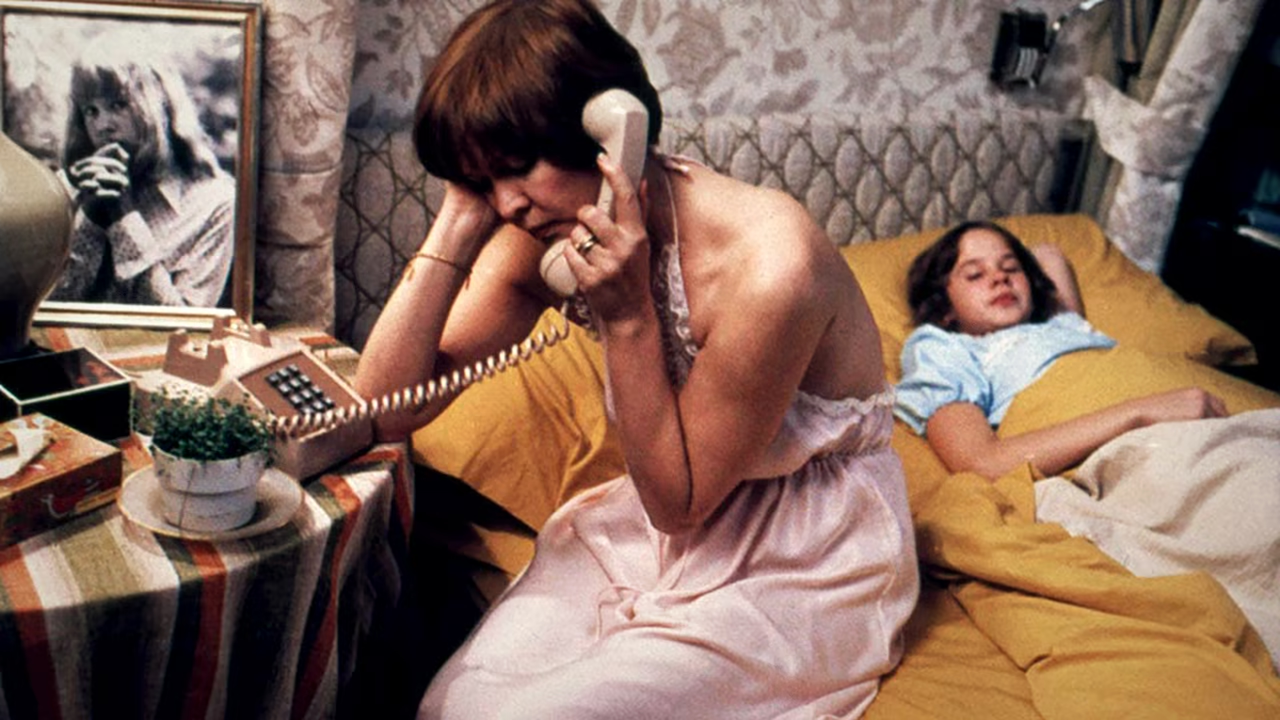
Further troubling signs emerge when Chris takes Regan for a routine medical check-up. During the examinations, Regan’s behavior takes a disturbing turn. She becomes uncharacteristically rude and combative, a stark contrast to her usual cheerful demeanor. The doctor suggests these changes might stem from psychological or neurological issues, possibly worsened by stress from her mother’s demanding career or the emotional fallout from her parents’ divorce. Skeptical but worried, Chris agrees to further testing, hoping for answers.
The situation escalates during a lively dinner party at their Georgetown home, attended by Chris’s film industry colleagues and local notables, including a Jesuit priest, Father Joseph Dyer (Father William O’Malley). While Chris is deep in conversation, Regan stumbles into the room, her expression vacant. In a shocking moment, she speaks crudely to a guest and urinates on the floor in front of the stunned partygoers. Mortified, Chris apologizes profusely and rushes Regan upstairs. In her bedroom, Regan appears disoriented and frightened, insisting she wasn’t in control of her actions. After tucking her in, Chris starts to leave but is stopped by Regan’s piercing screams. Rushing back, Chris is horrified to witness Regan’s bed violently shaking on its own, an unmistakable supernatural event that defies any rational explanation.
Medicine Confronts The Inexplicable
The following day, Regan undergoes more extensive medical examinations at a hospital. Her combative behavior worsens, and her language grows increasingly vulgar, alarming the medical staff. After a grueling series of tests, doctors propose that Regan may have a lesion in her temporal lobe, a condition that could explain her erratic behavior, aggression, and possible hallucinations. They recommend an arteriogram, a procedure involving the injection of dye into the arteries to visualize blood vessels in the brain. Chris, shaken by the bed-shaking incident she witnessed firsthand, remains skeptical of the medical explanations. Her growing unease marks the beginning of a harrowing journey to confront the demonic force possessing her daughter.
During the arteriogram, Regan writhes in agony, her screams echoing through the hospital room. After completing the scan, Dr. Samuel Klein (Barton Heyman) reviews the results but finds no abnormalities. Though cleared to return home to rest, Regan’s condition deteriorates rapidly. Alarmed, Chris frantically calls Dr. Klein to the Georgetown townhouse. Upon arrival, he’s stunned to find Regan’s body convulsing grotesquely, her limbs twisting unnaturally. The room fills with a deep, guttural voice emanating from Regan as she exhibits increasingly inhuman behavior. When Dr. Klein attempts to examine her, Regan displays shocking strength, violently resisting until he administers a sedative to calm her.
Dr. Klein, shaken but adhering to medical protocol, suggests consulting a psychiatrist, attributing Regan’s behavior to a severe psychological disorder, possibly dissociative identity disorder or schizophrenia. Chris, however, grows frustrated with the medical community’s insistence on neurological or psychiatric explanations, especially after witnessing phenomena like the bed-shaking incident that defy rational interpretation. After Dr. Klein’s urgent plea and another disturbing episode, Chris reluctantly agrees to a psychiatric evaluation. Yet, even after comprehensive testing, including EEGs and additional brain scans, Regan’s results come back normal, leaving her alarming behavior medically unexplained.
Explore More:
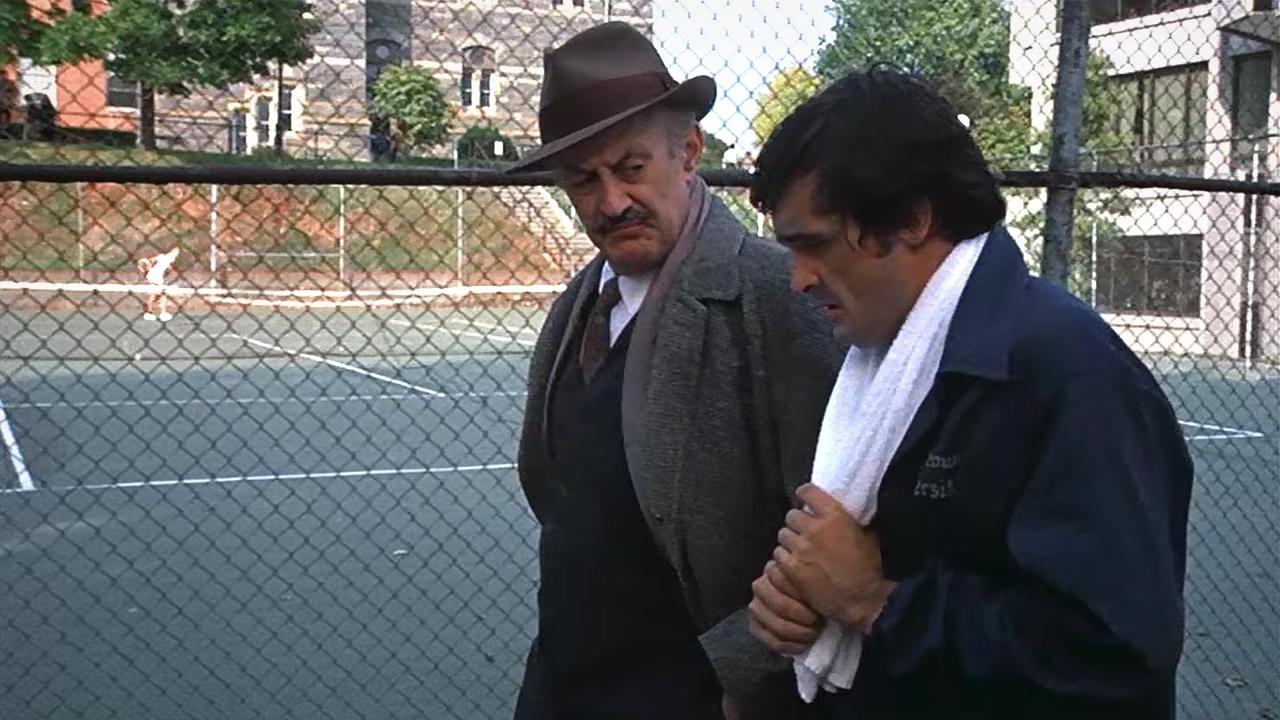
Upon learning these results, Chris races home to check on her daughter. Entering Regan’s bedroom, she’s hit by a blast of frigid air from a wide-open window, the curtains billowing wildly. Shivering, Chris hurriedly shuts it, wondering why Sharon would leave Regan in such conditions. Moments later, Sharon returns with Regan’s medication and faces Chris’s anger about the open window. Sharon explains that, before stepping out briefly, she had asked Chris’s friend Burke Dennings (Jack MacGowran) to watch over Regan. Oddly, Burke is nowhere to be found. Shortly afterward, Lieutenant William Kinderman (Lee J. Cobb), a seasoned detective, arrives with grim news. Burke has died after plummeting down the steep Hitchcock Steps adjacent to the MacNeil house, his neck grotesquely twisted in the fall.
The situation takes a terrifying turn when Chris witnesses Regan’s head rotating a full 180 degrees, her face contorted as she speaks in a demonic voice that mocks Chris’s fear. Following Regan’s terrifying head rotation and demonic vocalizations, Chris, utterly desperate, arranges for the psychiatric team to conduct a more direct and intensive evaluation. During this session, a psychiatrist attempts to communicate with the entity Regan had called ‘Captain Howdy,’ probing who might be inhabiting her. Regan responds in a distorted, menacing voice, with erratic answers, guttural growls, and unnatural physical contortions. The session proves futile as the entity within Regan becomes increasingly hostile, lashing out verbally and physically, leaving the psychiatrist profoundly shaken and without any conventional diagnosis.
Supernatural Defies Rational Explanation
The narrative shifts to Lieutenant Kinderman, who is investigating Burke’s suspicious death. Kinderman meets with Father Damien Karras (Jason Miller), a Jesuit priest and trained psychiatrist at Georgetown University. Kinderman seeks Karras’s insight into Burke’s unusual death, focusing on the particularly disturbing detail that Burke’s body was found at the base of the Hitchcock Steps with his head twisted completely backward, an injury that suggests more than a mere fall. Kinderman suspects a link to Regan’s condition, especially given Burke’s presence in her room before his death, but he lacks concrete evidence to pursue this theory formally.
Meanwhile, Regan’s violent outbursts continue to escalate, often requiring medical staff to restrain her with straps to prevent self-harm or injury to others. As Dr. Klein and his team of specialists, including neurologists and psychiatrists, confirm that all exhaustive diagnostic avenues, such as blood tests, imaging, and comprehensive psychological assessments, have yielded no identifiable medical cause for her terrifying condition, they are left at an impasse. In a moment of candor, Dr. Klein, aware of the Catholic Church’s historical role in addressing possession, suggests that Chris consider seeking a priest to perform an exorcism. He frames the ritual as potentially therapeutic, even from a secular perspective, citing its psychological benefits for patients who believe in spiritual causes. Chris, though initially resistant to such an unconventional approach, begins to consider it as her desperation grows.
Inside the Georgetown townhouse, Chris discovers a crucifix tucked beneath Regan’s pillow, its presence unsettling and unexplained. She questions Sharon, Karl, and others in the household, but no one admits to placing it there, deepening the mystery. Shortly afterward, Kinderman arrives to ask follow-up questions about Burke’s death. With a measured tone, he suggests Regan might have been involved, noting Burke was in her room that night. Chris vehemently dismisses this, explaining that Regan was heavily sedated with powerful tranquilizers, likely rendering her unconscious and unaware of Burke’s presence. This revelation only heightens Kinderman’s suspicions, as the unnatural twisting of Burke’s head suggests foul play requiring extraordinary strength, far beyond what a 12-year-old girl could muster, sedated or not.
After Kinderman leaves, thunderous noises erupt from Regan’s room, shaking the house. Chris races upstairs and is confronted by a nightmarish scene: furniture and objects flying across the room as if hurled by an unseen force, and Regan levitating above her bed, her body contorted, speaking in a guttural, demonic voice. The entity snarls at Chris, taunting her with the infamous line, “Do you know what she did, your cunting daughter?”—a vicious jab implicating Regan in Burke’s death. With medical and psychiatric options exhausted, Chris, desperate and terrified, seeks out Father Karras. In a tearful plea, she recounts Regan’s inexplicable behavior and begs him to consider an exorcism.
Faith Confronts Demonic Forces

Father Karras is initially skeptical, explaining that exorcisms require rigorous evidence and approval from the Catholic Church’s hierarchy, a process governed by strict Vatican protocols. Moved by Chris’s raw desperation, however, he agrees to evaluate Regan firsthand. Entering her freezing, disheveled bedroom, Karras confronts the entity possessing her. The demon launches into psychological warfare, claiming Karras’s recently deceased mother is “in here” with them, suffering in hell. Though Karras recognizes this as a manipulative tactic, he’s shaken when the demon reveals intimate details about his mother’s death, private information Regan could not possibly know. The demon’s voice shifts, mimicking his mother’s, amplifying Karras’s guilt over her lonely passing.
Before leaving, Karras asks Chris whether Regan could have known about his mother’s death. Chris confirms it’s impossible, as they had only just met Karras and Regan had no access to such personal details. Troubled yet resolute, Karras compiles compelling evidence, including audio recordings of Regan’s unnatural voice, photographs of her levitation, and accounts of her superhuman strength, to submit to the diocese. After review, the Church grants approval for an exorcism and assigns Father Lankester Merrin to lead the effort, with Karras as his assistant. That evening, Father Merrin arrives at the MacNeil house, his face etched with solemn determination, carrying a case containing sacred items: a Roman Ritual book, holy water, and a crucifix.
The priests begin the exorcism, reciting the Rite of Exorcism, sprinkling holy water, and commanding Pazuzu to release Regan. The demon retaliates fiercely, causing the room to shake, hurling blasphemous insults, and taunting Karras about his mother’s supposed damnation, exploiting his lingering doubts about his faith. The grueling ritual taxes both priests physically and spiritually. At one point, Merrin, who suffers from a chronic heart condition, steps out to take his medication, leaving Karras to monitor Regan. Alone, the demon intensifies its assault, perfectly mimicking Karras’s mother’s voice, pleading for help, further eroding his resolve.
Sensing Karras’s vulnerability, Merrin urges him to step outside to regain composure, warning that the demon thrives on exploiting emotional weaknesses. Karras complies, splashing cold water on his face and praying for strength. Upon returning, he finds Merrin slumped lifeless on the floor, dead from a heart attack induced by the ritual’s strain. Consumed by rage and desperation, Karras grabs the possessed Regan, shaking her and challenging Pazuzu to leave her and take him instead. The demon, seizing the opportunity, transfers into Karras’s body, his eyes glowing with malevolent triumph. In a final act of sacrificial will, Karras, fighting to retain control, hurls himself through the bedroom window and tumbles down the steep Hitchcock Steps outside, his body broken at the base, ensuring the demon’s destruction through his death.
In the aftermath, Regan gradually regains consciousness, her eyes clear and her voice her own, freed from Pazuzu’s grip by Karras’s ultimate sacrifice. Father Dyer administers last rites to Karras at the steps’ base, mourning his friend’s loss. Chris, traumatized but relieved, comforts Regan, who has no memory of the possession. Determined to leave the horror behind, Chris and Regan pack their belongings and depart Georgetown for a fresh start elsewhere. The film concludes with their somber departure, forever marked by their encounter with true evil, as Father Dyer gazes at the Hitchcock Steps, a silent testament to the battle fought and won at unimaginable cost.


